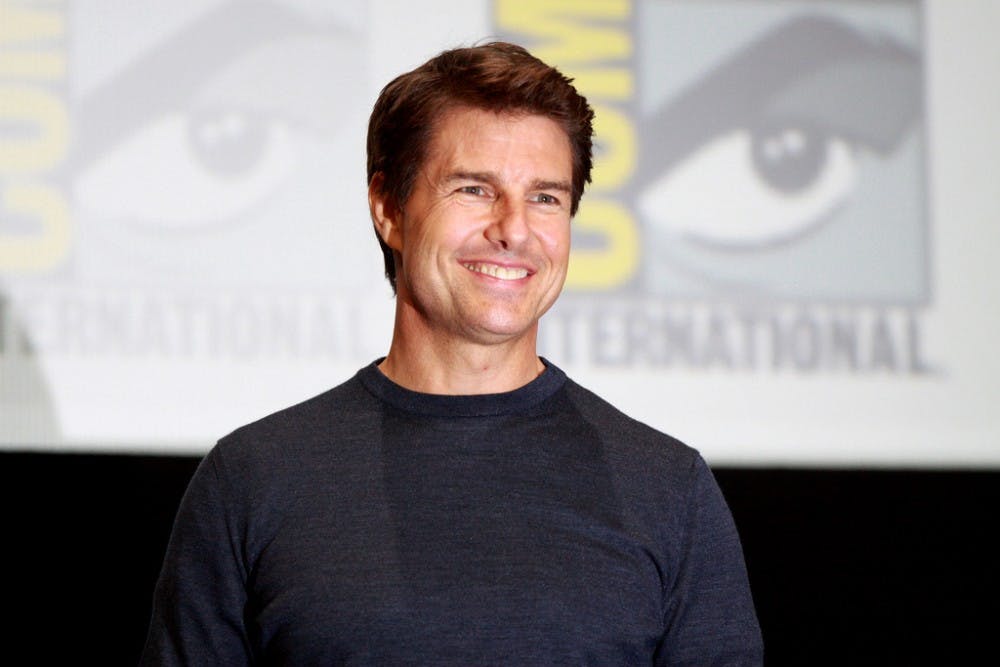Regardless of one’s thoughts on Tom Cruise’s personal life and religious beliefs, there is no denying that he is, even at the ripe old age of 55, one of the biggest movie stars on the planet.
He continues filming action movies and performing his own stunts while much younger actors are using stunt doubles.
Yes, one can say that this is partly because of who Tom Cruise is as a person, but the man should still be given credit. Ever since his breakout performance as the lead in the 1983 cult classic Risky Business, he’s been the star of an array of genre defining films.
From Rain Man to A Few Good Men to Jerry Maguire, Cruise has shown his range and his ability to be the most charismatic actor in a scene, even when one is supposed to hate him.
Apart from these dramas, Cruise’s filmography is also responsible for some of the most riveting action movies: Top Gun, Collateral (if you haven’t seen this, you must rectify this mistake) and the Mission: Impossible franchise (the 6th one is coming out next year).
He’s been able to leave his mark on each of these films and almost all have seen positive critical acclaim. Hence one can assume that anything featuring Cruise is bound to be, at the very least, a fun, popcorn-filled time.
Pair Cruise with director Doug Liman and there is somewhat of a match made in heaven. Liman is responsible for not only the fantastic Bourne Identity series, but also the spy-rom-com-known-to-have-ended-a-marriage Mr. & Mrs. Smith.
Liman’s filmography can best be described as a sinusoid reaching some high-highs and some low-lows — notably Jumper.
Two of the director’s most recent films are a good representation of this trend. Edge of Tomorrow (2014), starring the aforementioned Cruise and Emily Blunt, was a critical success while 2017’s The Wall, starring Aaron Taylor-Johnson and *airhorns* John Cena (“The Time Is Now” plays), received mixed reviews and had an underwhelming box office performance.
That being said, an issue seems to be who the leads are in Liman’s films and how that drives audiences. Liman movies with less big-name stars have received less acclaim and less money at the box office.
It was safe to say that with Tom Cruise as the star of American Made, there was at least going to be box office success.
American Made follows the life of pilot Barry Seal (Cruise), a man who is good at his job and wants to get some excitement out of it. Enter the CIA: “Schafer,” played by Domhnall Gleeson, catches Seal smuggling cigars and, seeing his potential, signs him up to be a courier between the CIA and General Noriega in Panama. As the job continues Seal becomes involved with the Medellin Cartel while trying to avoid the DEA.
The cast is rounded out by Sarah Wright, who plays Seal’s wife Lucy, and by Alejandro Edda and Mauricio Mejía, as Jorge Ochoa and Pablo Escobar, respectively.
If the plot sounds familiar to you, then it’s because parts of it have been covered in the Netflix series Narcos, albeit with a little less detail. Where Narcos primarily focuses on bringing down the Medellin Cartel, American Made is about Barry and how his newfound career as a drug smuggler affects his family and his lifestyle.
There are scenes where you see Barry’s lifestyle prior to his new job and how his new wealth positively affects the town. So when you see Barry’s life begin to fall apart you feel bad for the guy.
Sure he wasn’t doing anything legal per se, but you still feel like he deserved this sort of success.
Of course, we wouldn’t feel this way if not for the acting ability that Tom Cruise remembered he has. For the first time since Tropic Thunder, Cruise is outside of his “I’m a super spy who can kick ass” bubble, and it’s great to see him flash those talents once again.
He nails the Louisiana accent and his natural charisma blends in with his ability to play the dumb, oblivious soldier. He even flashes that old smile we are all a little too familiar with.
Not to be outdone is Domhnall Gleeson (Ex Machina, Star Wars: The Force Awakens), hamming it up and playing the CIA agent Schafer, who sees Barry as a tool that he can use to benefit his own ambitions in the agency.
Schafer doesn’t care about Barry, which is pretty obvious to the audience; Barry is the only one that fails to see that until later in the film.
Wright is there, more or less, just to show us that Barry does have a family and people who love him, because other than that she doesn’t have much to do.
The last 15 minutes of the film do feel a little rushed pacing wise, but the finality of the story doesn’t leave much to the imagination.
The camerawork, particularly Liman’s signature “shaky cam” aesthetic, is very noticeable and definitely adds to the atmosphere during the flight scenes.
However at times it was a bit distracting, and you don’t know where to focus for certain scenes. The vibrant colors found in almost every shot along with the occasional voice-over serve as a great reminder that this is somewhat of a comedy.
That being said, the film does criticize our government and the ways it operates quite overtly. The entire movie is about a man whose job was to aid the U.S. in militarizing rebels and how they were fine with his drug smuggling activities — until it stopped being convenient for them.
Barry Seal was able to reach great heights thanks to the CIA. Liman and Cruise do a great job of showing this in a light-hearted way that really grabs the audience and is generally a fun time.

















